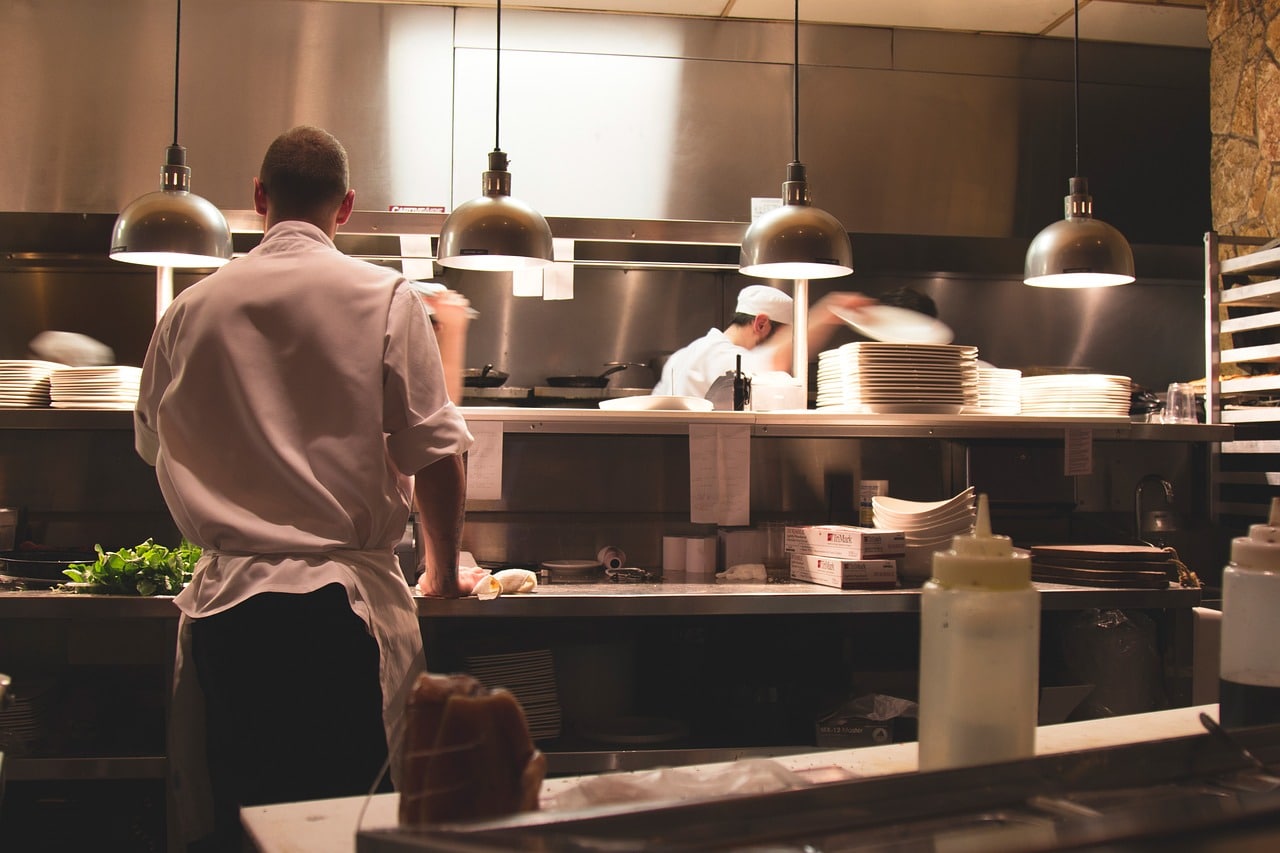Do Chefs Use Stainless Steel Pans?
Yes, professional chefs are known to prefer stainless steel pans and cast-iron cookware. These two metal cookware are very durable and provide rapid and even heat distribution for more efficient cooking.
And since efficiency in cooking is one half of the struggle in commercial kitchens, professional chefs need to use cookware to withstand the endless assault of cooking on busy days.
Stainless steel cookware is certainly not a trend, and there is a good reason why a nice set will fetch a good price on any day. The top advantages of cooking with stainless steel pans include:
- Stainless steel cookware takes the prize for durability. However, keep in mind that stainless steel cookware comes in different gauges or thicknesses. Choose the thicker gauges to minimize warping. Warping occurs when a very hot pot or pan is exposed to cool water—the rapid cooling of the metal results in some deformation. For the most part, these deformations are only temporary, but over time, the pans’ bottom does get deformed a bit, which impacts how they would evenly distribute heat and stand balanced on a gas range.
- Stainless steel cookware is manufactured using multi-plying technology. Despite having multiple layers of stainless steel, it has a very high cooking ability. The stainless steel quickly absorbs the heat and distributes it easily to all parts of the pan. Fast and equal heat distribution is excellent for cooking all kinds of dishes.
- In heat imaging tests, cast iron cookware and carbon steel cookware take the prize after ninety seconds of heating, with nearly all parts of the pan in the higher temperature range after less than two minutes of cooking.
- Stainless steel is very easy to clean. However, it is not nonstick, and you still have to apply a nonstick spray when frying and cooking. However, this is a very minimal drawback to such a durable type of cookware. We recommend avoiding using heavy-duty scrubbing surfaces as the polish will be affected when you scrub too much.
- Among the many pans in the market, stainless steel is one of the lowest maintenance costs. There is no nonstick surface that will chip or peel, or wear down over time. High-quality stainless steel cookware will likely last for generations, easily. As long as the proper care is given, you will be able to cook with your current set of stainless steel pots and pans for at least ten years with no issues.
What Nonstick Pans Do Chefs Use?
Chefs are known for being picky and precise with the cookware that they use. Despite the stable popularity of nonstick pans with home cooks, professional chefs are not frequently used in commercial kitchens. There are several reasons why professional chefs use other pans if possible:
- One of the main requirements of professional chefs is to use cookware that has optimal heating. By optimal, we mean that the pan’s temperature should rise quickly and equally across the entire section of the pan’s bottom. If cookware doesn’t heat up quickly, that will cost the professional chef precious time, leading to a disaster on a busy night at the restaurant.
The Teflon coating on nonstick pans prevents the quick dispersal of heat throughout the pan. You have to wait for a little before the temperature is ideal for you to start sautéing or heating oil for a steak.
The unequal heat distribution is problematic, and the evenness of the cooking also cannot be guaranteed, either. It’s common for nonstick pans to be very hot at the center, only moderately hot as you move away from the middle.
Inefficient energy transfer means you can’t expect the same amount of heat on all sides of the pan, which means that food placed in the center will cook more rapidly than it should, leading to burnt food. There’s so much happening in a professional kitchen that uneven heat transfer can ruin good food. - The next issue is fragility. Nonstick pans aren’t designed to withstand 12-14 hours of nonstop cooking in professional cooking. That’s literally like asking a trainee boxer to go 12 rounds with a professional boxer. Nonstick pans will get warped, bruised, and stripped of their nonstick layers easily in a few nights in a busy kitchen. Since professional chefs need to deliver fresh food quickly, they can’t use this type of pan because it will greatly slow them down. After all, they need to be more careful while cooking to reduce the fatigue on the metal.
- Metal utensils will destroy the nonstick coating of pans, and in professional kitchens, they most often use metal utensils for cooking. Metal utensils can withstand being dropped and placed near super-heated areas, they can be cleaned easily, and they maintain their sharpness and shape no matter how battered they are. Nothing compares, for instance, to stainless steel utensils. The only time that we would recommend using softer utensils is when you are working with a more fragile cooking surface, such as a glass stovetop.
Pros and Cons of Different Pans
Stainless steel pans
Stainless steel pans are very durable, but they are not nonstick. Be careful when cooking sticky food, and because the heat exchange is very quick and efficient, it’s easy to burn food with these highly efficient pans. Get your cooking times down pat and use the right utensils when flipping or stirring, too.
Nonstick pans
Nonstick pans are cost-effective and can quickly cook eggs, pancakes, and other breakfast and lunch staples. The downside is that the Teflon coating will eventually become worn out, revealing the metal underneath. Once the nonstick layer is stripped, the metal underneath can become corroded.
Copper pans
Coper pans are in the same league as stainless steel pans, but they need to be coated so that copper does not transfer from the pan to your food.

